 By “Spec“, Electro-Tech-Online forum member
By “Spec“, Electro-Tech-Online forum member
Often newbies ask, ‘How can I get started in electronics?‘
This is a big question, but the very short answer is, ‘Learn the two fundamental electronics laws (Kirchoff, Ohm), get a good book about electronics theory and practical, build some circuits, and make some measurements.’ Follow-on questions are, ‘What electronic equipment do I need?’ and, ‘Which components should I buy?‘ This article gives some specific advice on the latter question.
Electronics is vast and complex, but it can be divided into two broad areas: analog and digital (logic). It is advisable to grasp the fundamentals of analog electronics even if you are going to specialize in digital electronics. On the other hand, many makers have built numerous projects without learning about digital electronics. For this reason, logic chips are not greatly represented in this core list of components. Don’t get the wrong idea though: this may be a basic components list but you can still build some pretty advanced circuits with the components listed.
COMPONENT TYPES
There are millions of different electronic components, ranging from elementary resistors through single transistors to unbelievably complex microprocessor chips, containing billions of transistors. For a newbie, the choice is bewildering. But it needn’t be, because many components, in spite of their different part numbers, are essentially the same (transistors and opamps especially), and also there is a core of ubiquitous components that will suffice for the vast majority of circuits, even though you may need to buy an additional special component now and then.
COST
Electronic components, in the main, are remarkably cheap. For example, an LM555 timer and LM358 dual opamp only cost about $0.33US. Small signal transistors are yet cheaper, at around $0.10US. Even high-power BJTs and MOSFETs, only cost around $2.00US each. And the biggest bargain of all is the Raspberry Pi Zero single board computer, at a mere $4.00US. Ironically, one of the lowest technology components on the list is also the most expensive; the 4,700uF electrolytic capacitor costs around $6.00US. A rough guide to prices is shown in [brackets] in US dollars next to most components.
QUANTITY
How many of each component to buy? The answer is, it depends on the component cost, what circuits you are building, and what your budget is. You really need two breadboards, as shown in the image at the top of this post. But for jellybean (low cost) components I would advise 20 of each, apart from the 100nF decoupling capacitor where 50 of is recommended because they are used so widely in circuits. The 250mW resistors are similarly widely used and 50+ of each value is advisable. The small signal and low power transistors are jelly bean, but perhaps buy 5 of each of the more powerful relatively expensive transistors.
MINIATURIZATION
Components are getting smaller and, while this is great for completed electronic products, like cell phones (mobile phones), it is not so good for makers because surface mount components are so small that they are difficult to work with. The first surface mount components were not too small, but some of the newer components are so small that they can only be used with specialist soldering equipment (solder station) and a good quality optical magnifying system (microscope or camera).
Then ball grid array (BGA) technology arrived, where the solder joints are hidden under the component package. BGA components are beyond the capabilities of home makers. Although small BGA components can be glued up-side-down to an adapter board so that the balls are accessible. Wire links can then be used to connect to the pins of the adapter board.
Unfortunately, many of the latest, and best components are only available in surface mount. This is especially the case for opamps and MOSFETS. The best way around this problem is to mount surface mount components on adapter boards so that the surface mount component can be used as a thru hole component (and plugged into breadboards). Sometimes you can also mount the standard supply line decoupling capacitors on the adapter board too.
COMPONENT MANUFACTURER
A particular component may be made by a number of manufacturers: TI, ON, LT, AD, Vishay, Infineon, ST, Toshiba, Diodes, NXP… and, although the component identity may be the same, there are often performance variations. So, the component’s data sheet needs to be checked carefully to ensure that the parameters meet the requirements of the target application.
SOURCES
Components are distributed by a number of sources. At one end there are the manufacturers, and the top-line distributors: DigiKey, Mouser, Arrow, Element 14 (Farnell), RS… followed by a sea of smaller distributors. Then there are the budget retailers, eBay being the biggest, probably followed by Alibaba and then Amazon.
You can safely buy components from the manufacturers, and you can be reasonably confident about components from the top-line distributors. But you have to be wary when purchasing from other sources. And in particular, there are components that are a high risk of being rip-offs: batteries, large capacitors, high power transistors, RF transistors. Batteries, in particular, need caution, especially if performance claims greatly exceed those of the main-line manufacturers. Testing has sown that theses batteries are far inferior to the real thing.
When you get more experience you can get into the world of salvage components. Theses are removed from scrap equipment: TVs, fridges, microwaves… and this way you get some very high quality and expensive components for nothing, or close to nothing.
STORING & INDEXING
You may think that the technical side of electronics is going to be the hardest part but, in practice, one of the major problems is knowing what components you have and where they are. If you are not careful you can end up with a mountain of components but can never find the particular component you want. Believe it or not, this seemingly mundane area can cause the biggest frustration in electronics. And if you are not careful you can end up with so many bits and pieces that you do not have room for working on your latest project- I speak from experience.
Nobody ever does this 100% but it is best to maintain a list on your computer of all your components. Keep all your components in boxes which are marked with the contents. Resistors are a special case: get a cabinet with draws for each decade or sub-decade and keep individual resistors in packets. Similar cabinets with draws can be used for smaller components. Make sure the drawers are a decent size.

MICROCONTROLLER/MICROPROCESSOR
Processors may seem out of place in a list of core components. But there was a sea-change at the beginning of 2016, and processors are now simple to use and cheap. This is epitomized by the Arduino Uno (microcontroller) and the Raspberry Pi Zero (microprocessor). The situation has now been reached where it is often simpler and cheaper to use processors for even the most simple functions.
You may wonder why processor chips: PIC, AVR, ARM, are not included in the list. The reason is quite simple, it is now more convenient and cheaper-to-use, ready-built processor boards (processor chips are for experienced makers).
Many newbies are put off by the thought of writing software, to program a processor to realize a particular function but, in practice, this is also now a simple task that the average maker should have no trouble doing (computer programming is a vast and complex field though). There are also many pre-cooked programs on the net which you can simply cut and paste. You will need a personal computer though.
OPA 2192 OPERATIONAL AMPLIFIER
This advanced, opamp, may seem another odd choice for a starters list, especially as it is only available in a surface mount case and it is relatively expensive. But, as of 2014, the OPA2192 is the most ‘perfect’ opamp available. Because of this, it is easy to use and understand and can replace most other opamps, including the LM358 (apart from low supply line LM358= 3V, OPA2192= 4.5V). Put quite simply, the OPA2192 will greatly improve the performance of any circuit and there are functions that you can only realize with the OPA2192 that are impossible with the LM358 and many other opamps.
DATA SHEETS
Data sheets are indispensable; they tell you exactly how a component works and what its performance is. Data sheets are another area that can be daunting for newbies, but once you find your way around them, they are not too difficult. Some of the more esoteric information in data sheets can simply be ignored for most applications. Naturally, data sheets vary according to the component; a resistor or capacitor data sheet may be a single page, while the datasheet for a microprocessor could be 500 pages. A link to a data sheet is given for most components in the list.
CORE COMPONENTS LIST
(1) Hardware
Breadboard [$6.00]
(see image at head of this article)
Stripboard [$5.00]
Wire
Jumper leads (for plugging into a breadboard) [$2.50 for 50]
Tagstrip [$0.70]
Terminal, printed circuit [$0.15]
Terminal, panel mount [$0.60]
IC socket strip, turn pin, 40 way. [$1.00] (cut to suit chip package)
(2) Resistor
Metal oxide, 0.25W, +-5%, thru-hole [$0.01 to $0.05 depending on quantity]
1R, 2.2R, 4.7R, 7.5R
10R, 22R, 47R, 75R
100R, 220R, 470R, 750R
1K, 2.2K, 4.7K, 7.5K
10K, 22K, 47K, 7.5K
100K, 220K, 470K, 750K
1M, 2.2M, 4.7M, 7.5M
10M
Wire wound, 10W, +- 5%, chassis mount [$1.00]
0R1, 0R47 (0.1 Ohms, 0.47 Ohms)
1R, 4.7R
10R, 47R
100R, 470R
Resistor precision: Welwyn RC55 [$1.00] (Buy as required)
(3) Capacitor
22pF
47pF
100pF
220pF
470pF
1nF polycarbonate
4.7nF polycarbonate
10nF polycarbonate
47nF polycarbonate
100nF 25V ceramic X7R dielectric [$0.30] (the most widely used decoupling capacitor)
47uF, 25V aluminum electrolytic [$0.50]
4,700uF, 25V aluminum electrolytic, low ESR, high ripple [$6.oo]
(4) Diode
Diode, small signal, high-speed: 1N4148, (75V, 300mA) [$0.05]
Rectifier medium current: 1N4007 (1000V, 1A) [$0.20]
Rectifier high current: MBR10100 (Schottky, 100V, 10A) [$0.90]
Zener diode: BZX79xxx (500mW, 2%) [0.17$]
2.5V
3.3V
5.0V
8.2V
12V
15V
24V
48V
LED High efficiency 2mA [$0.30]
(5) Transistor
NBJT small signal: BC546 [$0.10]
PBJT small signal: BC556 [$0.10]
NBJT low power: BC337 [$0.12]
PBJT low power BC327 [$0.12]
NBJT power: TIP41C [$0.80]
PBJT power: TIP42C [$0.80]
NBJT high power: TIP35C [$1.50]
PBJT high power: TIP36C [$1.50]
JFET: 2N3819 (N type) [$0.50]
NMOSFET small signal: TBD [$0.60]
PMOSFET small signal: TBD [$0.60]
NMOSFET low power: TBD [$0.70]
PMOSFET low power: TBD [$0.70]
NMOSFET high power; TI CSD18532KCS [$2.00]
POSFET high power; ST STD35P6LLF6 [$2.00]
(6) Integrated Circuit, Linear & Mixed
Dual opamp, general purpose: LM358 [$0.33]
Dual opamp, high performance, precision, rail to rail input output (RRIO): OPA2192 (surface mount only) [$2.00] (buy as required)
Dual comparator: LM393 ($0.33)
Timer: LM555 [$0.33] (LMC555 also worth considering [$0.50])
Three terminal adjustable voltage regulator: LM317 (positive), LM337 (negative) [$0.60]
Adjustable voltage reference: TLVH431LP [$1.00]
(7) Integrated Circuit, Logic
Quad NAND Shmitt trigger inputs: 74AHC132 [$0.50]
Decade counter decoder: 74HC4017 [$1.00]
(8) Microcontroller/Microprocessor
Arduino: Uno clone: [$3.00]
Raspberry PI: Zero [$4.00]
ADDENDUM
741 OPERATIONAL AMPLIFIER
When Fairchild introduced the 741 opamp in 1968, it caused a revolution in the analog world and quickly became the biggest-selling opamp of all time. There are endless circuits, especially on the net, that specify 741 opamps, and academia inevitably uses 741s as opamp examples and in practical projects. So you may wonder why the 741 isn’t on the list of go-to components: although the 741 is an old friend, it has some serious limitations: limited input and output voltage ranges, minimum supply rails limit, low output source and sink currents, poor saturation recovery… Consequently, the 741 should be avoided now, especially by newbies who have been confused and frustrated by the 741 and, unfortunately, many of the circuits you see simply do not work with a 741.
2N3055/MJ2955
The 2N3055 was the first under-a-dollar, high-power silicon BJT. Launched by RCA in the early 1960s, it became the go-to device for many applications, especially audio power amplifiers and power supplies. The 2N3055 is reliable and rugged and is produced by numerous manufacturers. Later the MJ2955 PNP compliment was introduced by Motorola (now ON). Once again, you may ask why these reliable old work-horses are not included on the list. Quite simply, the 2N3055/MJ2955 have now been eclipsed by better performing, high-power transistors that are easier to use and will enhance the performance of your projects.
This article first appeared in Electro-Tech-Online














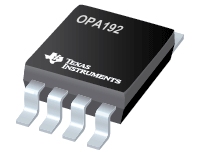






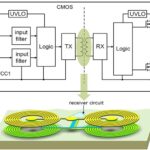
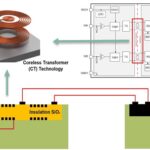

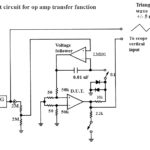
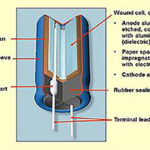

Leave a Reply
You must be logged in to post a comment.